Going off the grid requires more than a desire to escape the hustle and bustle of modern life. It’s a commitment to self-sustainability and independence. It’s about creating a life that is both harmonious with nature and well-integrated with modern technology. But most importantly, it’s about taking control of the resources and services we depend on.
This lifestyle is about mastering a set of old and new skills, from chopping wood and brewing beer to understanding how solar panels and bio-diesel generators work. It’s about designing your own space, cultivating your own food, and generating your own electricity. It’s about embracing a learning mindset, being open to new experiences, and having the courage to step away from the conventional.
- Off-grid living is about self-sustainability and independence.
- This lifestyle requires a set of old and new skills, from chopping wood to understanding how modern technology works.
- Off-grid living is about designing your own space, cultivating your own food, and generating your own electricity.
- It’s about embracing a learning mindset, being open to new experiences, and having the courage to step away from the conventional.
- Going off the grid is not a destination, but a journey – a journey towards self-reliance, sustainability, and a deeper connection with the natural world.
Off Grid Living: A Guide to Self-Sufficiency
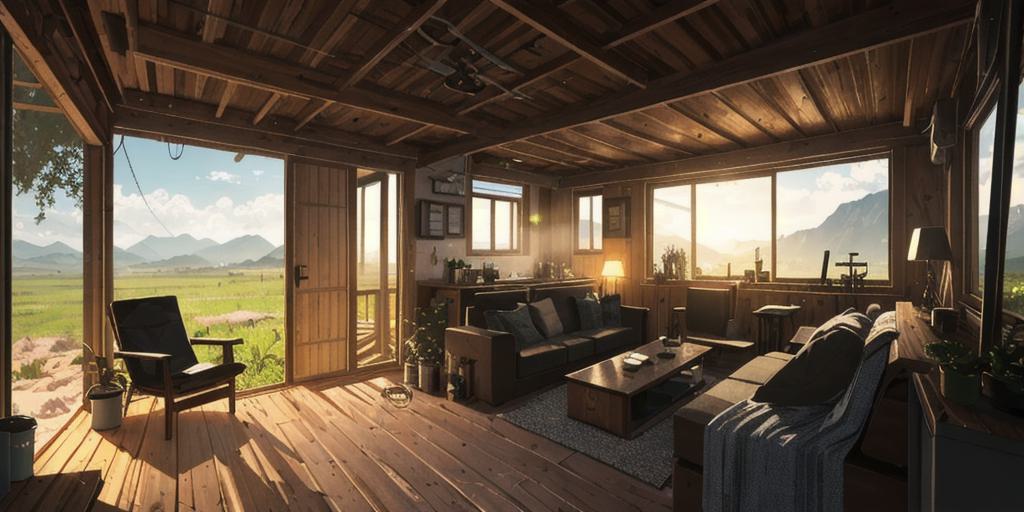
Embracing the Self-Sufficient Lifestyle
Stepping off the beaten path of our hyper-consumerist society and into the wild, sustainable world of off-grid living requires a shift in mindset and a set of practical skills. It’s not merely about unplugging from public utilities or turning your back on conventional employment. It’s about the pursuit of independence, personal growth, and a harmonious relationship with nature and resources.
Here’s the thing – off-grid living isn’t about renouncing modern conveniences. It’s about taking control of the resources and services we depend on. We can generate our own electricity with solar, wind, and hydro power. We can cultivate our own food. We can create a life that’s economical, integrated, and less reliant on systems over which we have no control.
The Art of Learning Off-Grid Skills
Off-grid living requires a set of skills that are both old and new. Chopping wood, brewing beer, or making cheese might seem like throwbacks to a bygone era, but they’re as relevant today as they were in our grandparents’ time. These are skills that nourish the body and the soul, creating a tangible sense of accomplishment that’s hard to find in the virtual world of clicks and swipes.
And it’s not all about going back to the old ways. Modern technology has a vital role to play in the off-grid lifestyle. From solar panels to bio-diesel generators, innovation is enabling us to live off the grid without sacrificing the comforts we’re accustomed to. The key is to embrace a learning mindset, be open to new experiences, and have the courage to step away from the madness of the modern world.
Creating Your Off-Grid Sanctuary
Your off-grid journey begins at home. Whether it’s a cabin in the woods, a yurt in the desert, or a tiny house on wheels, your dwelling can be a self-sufficient sanctuary. It’s about designing your space with a purpose, utilizing renewable energy sources, and creating a home that’s in harmony with its environment.
Remember, off-grid living isn’t a one-size-fits-all proposition. It’s about living beyond the system, finding what works for you, and creating a lifestyle that aligns with your values. The journey towards self-sufficiency can be as large or as small as you desire. Whether it’s starting a vegetable garden, installing solar panels, or going entirely off the grid, every step is a step towards a more sustainable and independent life.
So, are you ready to embrace the off-grid lifestyle? Remember, it’s not a destination, but a journey – a journey towards self-reliance, sustainability, and a deeper connection with the natural world.
Mastering Renewable Energy Sources for Off-Grid Homes
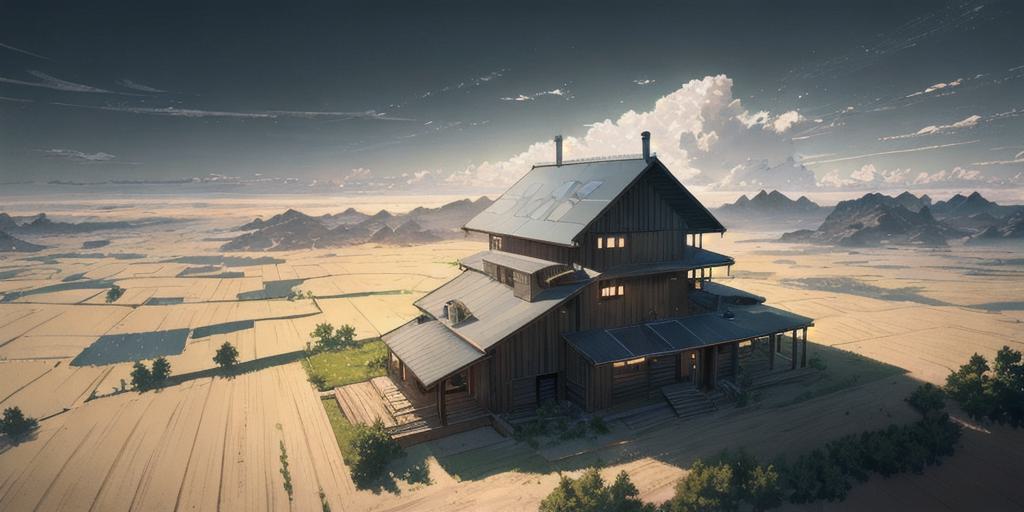
Harnessing the Power of the Sun
Embracing off-grid living necessitates an intimate understanding of renewable energy sources, and none are more accessible or abundant than our own fiery star, the sun. Solar energy is not just an eco-friendly power source – it’s a testament to self-sufficiency, an embodiment of living in harmony with nature, and a potent symbol of independence.(source)
Installing solar panels on your off-grid dwelling is like planting a seed – a seed that will grow into an infrastructure of self-reliance, providing you with electricity to power your day-to-day life. Everything from lighting your home to charging your devices can be powered by the sun. But it’s not just about the hardware. The real magic lies in understanding the science and technology behind solar power, in being able to harness and store this energy effectively.
Capturing the Wind
Wind energy is another powerful player in the renewable energy game. Like solar energy, it offers a clean, sustainable power source that can be harnessed with the right technology. But wind energy adds another layer to our off-grid living tapestry. It’s unpredictable, it’s dynamic, and it requires a level of adaptability and resilience. Working with wind energy is like dancing with mother nature herself, riding her rhythms and harnessing her power.(source)
Building and installing a wind turbine can be a rewarding project, both in terms of the practical skills you’ll acquire and the tangible benefits you’ll reap. Like solar panels, wind turbines can be scaled to meet your specific energy needs, making them a versatile addition to your off-grid arsenal.
Mastering the Art of Energy Storage
Of course, the sun doesn’t always shine, and the wind doesn’t always blow. That’s where energy storage comes into play. Mastering the art of energy storage is like learning to save for a rainy day – it’s about future-proofing your energy supply, about creating a buffer between you and the unpredictability of nature.(source)
Batteries, from simple lead-acid car batteries to advanced lithium-ion systems, are the cornerstone of any off-grid energy storage solution. But they’re not the only option. Techniques like pumped storage – where excess energy is used to pump water uphill, which can then be released to generate power when needed – offer innovative and sustainable alternatives.
Ultimately, mastering renewable energy sources for off-grid living is about learning to work with nature, not against it. It’s about cultivating a mindset of adaptability, a spirit of innovation, and a commitment to sustainability. In the process, you’ll not only achieve independence and self-reliance but also contribute to the greater good by reducing your environmental footprint.
Water Harvesting and Purification Techniques for Off-Grid Living
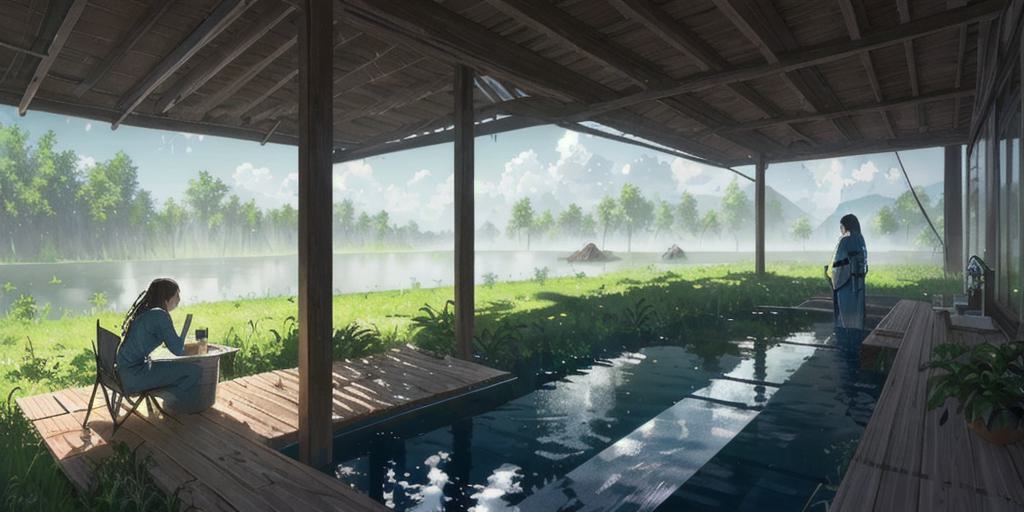
Harvesting the Sky: Rainwater Collection
Just as the sun and wind provide us with energy, the sky holds an abundant source of sustenance – water. Consider it as nature’s cocktail, delivered right to your doorstep. But unlike a cocktail, it requires a bit of work to make it consumable. The concept is simple: catch, store, and purify. Think of it as a dance, a waltz with the elements to the tune of sustainability. (source)
Start by investing in a rainwater harvesting system. This could be anything from a simple barrel under a downspout to an elaborate network of tanks and filters. The key here is adaptability — molding your system to fit your environment, your needs, and your resources.
From Cloud to Glass: Water Purification
Once you’ve collected your water, it’s time to purify it. This may seem like a daunting task, but it’s actually a testament to human ingenuity. From ancient civilizations to modern science, we’ve developed a myriad of ways to turn murky liquid into crystal clear, drinkable water.
Boiling is the most primitive and one of the most effective methods. Chemical purifiers, such as iodine or chlorine tablets, are also an option. But for a more sustainable and long-term solution, consider investing in a water filter. There are various types on the market, from simple pitcher filters to advanced reverse osmosis systems. Choose one that best fits your circumstances and commit to learning how to use and maintain it effectively.
Maintaining the Flow: Water Conservation
Finally, living off-grid requires a shift in mindset — from consumption to conservation. This is particularly true for water. With no municipal supply at your disposal, every drop counts. It’s about understanding the value of this vital resource, and treating it with the respect it deserves. (source)
Adopt practices that reduce your water usage — fix leaks promptly, use water-efficient appliances, and recycle greywater for irrigation. Even small changes, like turning off the tap while brushing your teeth, can make a significant difference. Remember, water conservation isn’t just about survival, it’s about stewardship — taking care of the earth as it takes care of us.
Growing Your Own Food Off the Grid: A Comprehensive Guide
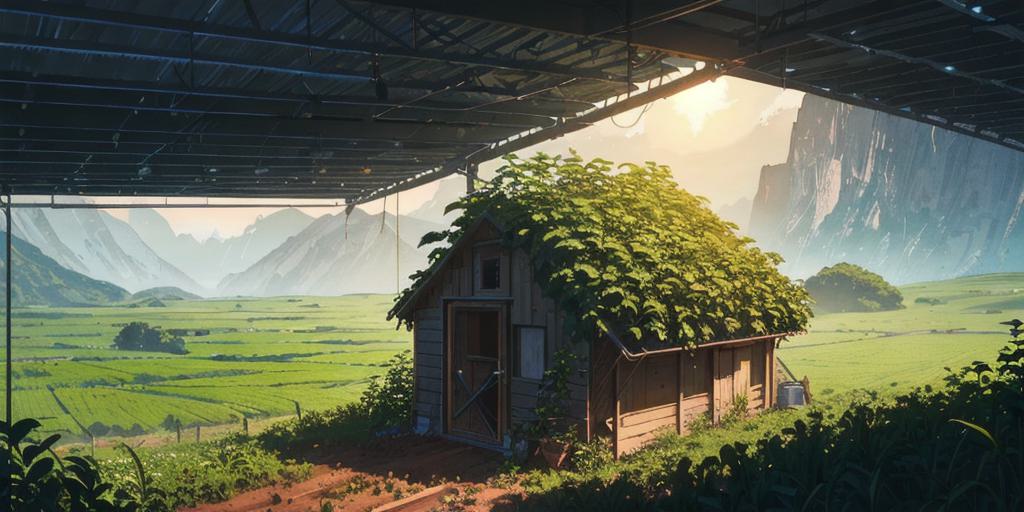
Seeds of Independence: Planning Your Garden
Creating a successful off-grid garden is not about green thumbs and horticultural magic. It’s about strategy, understanding your environment, and building a relationship with the land. It’s a dance, a gentle negotiation between you, the soil, the weather, and the diverse life forms that make up your garden ecosystem. (source)
Start by understanding your zone. Each geographical area has its specifics — temperature, rainfall, soil type, even sunlight hours. These factors determine what grows well and what doesn’t. Next, consider your food needs and preferences. There’s little point in growing a bumper crop of beets if nobody in your family likes them. Make a list of the vegetables, fruits, and herbs you consume regularly and cross-reference it with what grows well in your zone.
From Soil to Table: Cultivating Your Crops
Just like any great project, a successful off-grid garden starts with a solid foundation: the soil. It’s not just dirt, it’s a living, breathing ecosystem. Understanding and nurturing your soil is the first step towards a thriving garden. Soil testing kits are a great tool, giving you an understanding of your soil’s pH and nutrient levels. Based on the results, you can then amend your soil with compost, manure, or other organic matter to create the optimal growing environment.
Once your soil is ready, it’s time to plant. This is where things get exciting. Planting the right crops at the right time can make the difference between a bountiful harvest and a disappointing yield. Remember, nature doesn’t rush, and neither should you. Patience, persistence, and a touch of optimism are the gardener’s best friends. (source)
A Symphony of Sustainability: Harvesting and Preserving
Harvesting is the crescendo of your gardening journey, the payoff for all your hard work and patience. But it’s also just the beginning. Once your crops are ready, it’s time to preserve the fruits (and vegetables) of your labor. This is where your garden truly becomes a cornerstone of your off-grid life — providing sustenance not just for a season, but for the entire year.
There are many ways to preserve food, each with its own charm and utility. Canning and pickling, for instance, can transform your harvest into a kaleidoscope of flavors. Dehydrating and freezing, on the other hand, preserve the natural taste of your produce for months. The key here is variety — different preservation methods offer different benefits, allowing you to enjoy your harvest in myriad ways throughout the year.
Growing your own food off the grid is not just a means to an end. It’s a journey, a way of life, a statement of independence. It’s about stepping away from the conveyor belt of mass-produced, supermarket food and stepping into a world where you are actively involved in the creation of your sustenance. It’s about taking control of what you put into your body and, by extension, taking control of your health and your life. And that, I believe, is a journey worth embarking on. (source)
Natural Building Materials for Off-Grid Homes
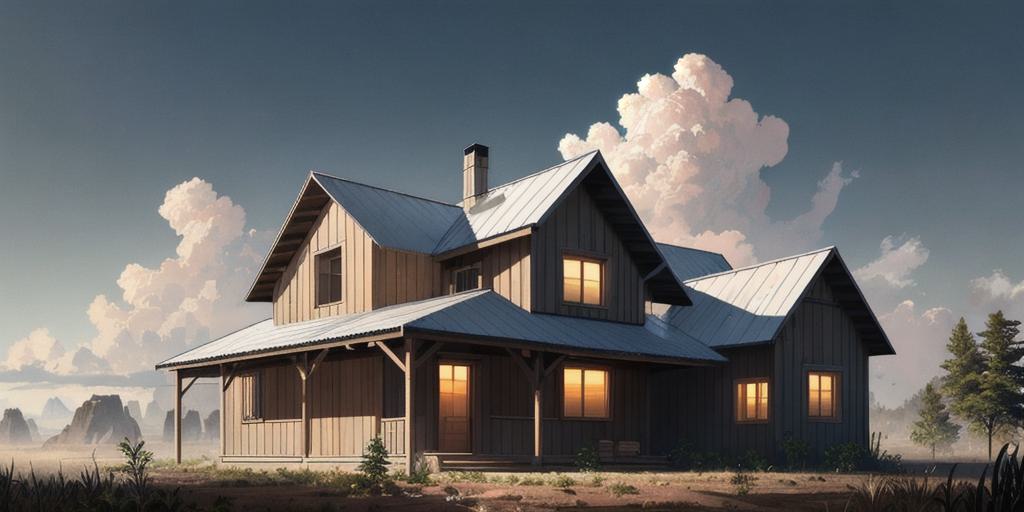
Building with the Breath of the Earth: Cob Houses
Imagine a home that feels like it’s grown out of the earth, a dwelling that’s both eco-friendly and aesthetically pleasing. Cob houses fit this description beautifully. The beauty of cob is that it’s built from a mixture of clay, sand, and straw — materials that are often locally sourced and renewable. This means your home could have a minimal carbon footprint and blend seamlessly into the natural surroundings. (source)
But don’t let the humble materials fool you. Cob houses are durable, comfortable, and incredibly versatile in design. The building technique allows for curvaceous walls, built-in furniture, and even sculptural elements. All this is possible without the need for extensive construction experience. Cob building is a craft that can be learned and mastered by anyone willing to get their hands dirty.
Embracing the Simplicity of Log Cabins
There’s a certain romance attached to the idea of living in a log cabin. The image evokes a sense of simplicity, of being close to nature, and of self-reliance. But beyond the allure of the rustic aesthetic, log cabins offer practical benefits for off-grid living. The natural insulation properties of wood can help regulate indoor temperature, reducing the need for artificial heating or cooling. And, with a plethora of DIY kits and resources available today, constructing your own log cabin is more accessible than ever.(source)
It’s important to remember, however, that building a log cabin is not a task to be taken lightly. It requires careful planning, a good understanding of your environment, and a willingness to invest time and physical effort. But the reward — a home that is uniquely yours, a testament to your labor and love — is well worth the effort.
Unleashing Your Creativity with Alternative Building Methods
When it comes to building off-grid homes, there’s no shortage of innovative techniques to explore. From geodesic domes and tiny houses to earthbag homes and yurts, these alternative building methods offer a chance to push the boundaries of traditional architecture and create a home that truly reflects your personal style and philosophy.
What’s more, many of these techniques prioritize sustainability, making use of recycled or reclaimed materials and incorporating features like green roofs and solar panels. By choosing an alternative building method, you’re not just building a home; you’re making a statement about the kind of world you want to live in — one that values creativity, sustainability, and the power of human ingenuity. (source)
Off-grid living doesn’t mean compromising on comfort or aesthetics. With the right materials, a bit of know-how, and a healthy dose of creativity, you can build a home that’s not only sustainable and self-sufficient, but also a unique reflection of your personal style. So don’t be afraid to dream big — or small, or round, or rustic. The only limit is your imagination.
Self-Defense and Security Measures for Off-Grid Living
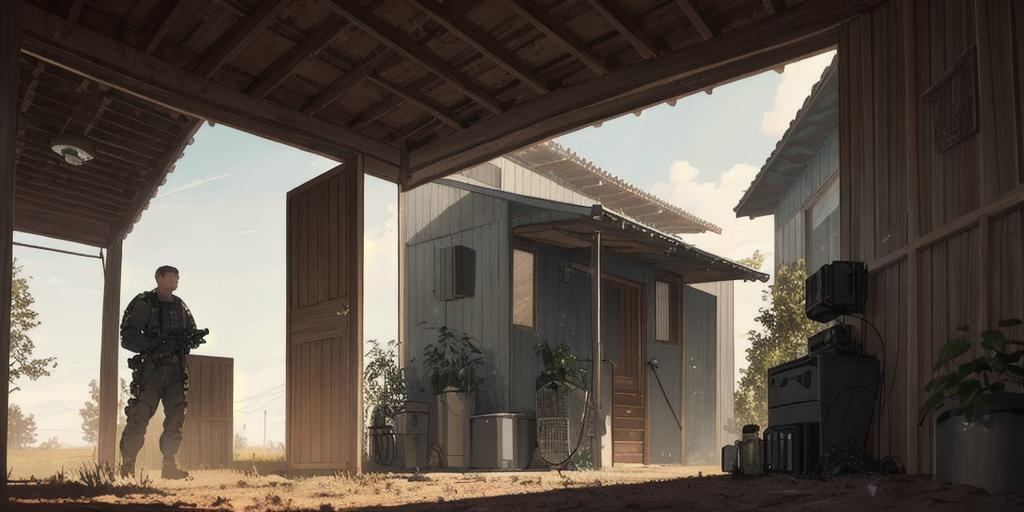
Tools of Defense: Protecting Your Off-Grid Sanctuary
When we think of off-grid living, we often envision idyllic landscapes, self-sufficiency, and an escape from the hassles of modern civilization. However, it’s crucial to remember that security is just as important in this lifestyle, if not more. It’s not about fostering paranoia, but rather about ensuring your peace of mind while enjoying your newfound freedom. Below are some useful tools and techniques for defending your off-grid abode. (source)
Physical Barriers: The First Line of Defense
Moving to an off-grid location often means fewer neighbors and potentially more vulnerability. One of the first steps to ensure security is to establish physical barriers. This could mean creating a secure perimeter for your property, or installing advanced locking mechanisms on your doors. A robust garage door system can serve as an effective deterrent, offering protection for your valuable tools, equipment, and vehicles. (source)
Consider also the strategic placement of objects around your home. For example, a simple 2×4 across an entrance can serve as both a deterrent to intruders and a protective measure to prevent pets from escaping. An uninvited guest may trip over such an obstacle in their haste to leave, providing you with an advantage. (source)
Unorthodox Tools: The Power of Improvisation
Moving away from the grid doesn’t mean leaving behind ingenuity. In fact, it is during this pursuit of a self-sufficient lifestyle that the power of improvisation becomes evident. Everyday items can be used as defensive tools if the need arises. A sturdy piece of wood, for instance, can be utilized as a makeshift weapon. Even a can of hairspray can become an effective deterrent, as one Florida woman discovered when an intruder attempted to break into her home. (source)
Remember, however, that these are last resort measures and should be used responsibly. It’s always best to avoid confrontation when possible. But if you are cornered, knowing how to use common household items to your advantage can make all the difference.
Building a Safe Community: Cooperation Over Competition
Living off-grid doesn’t mean living alone. Cooperating with like-minded individuals can help create a safer and more secure community. In the face of adversity, people can accomplish more together than they can on their own. Pool resources, share skills, and look out for one another.
Living off-grid is about more than just surviving – it’s about thriving. By prioritizing security measures, you not only ensure your safety but also enrich your off-grid experience. Remember, preparation and vigilance are not signs of fear, but rather expressions of strength and resilience. With these tools and techniques, you can enjoy the peace and freedom that off-grid living offers, secure in the knowledge that you’re well-prepared for whatever comes your way. (source)
Community and Connection in Off-Grid Living

The Unseen Web of Off-Grid Living
When we peel back the layers of off-grid living, beyond the tangible elements of survival and sustainability, we find an intricate web of interpersonal relationships and community structures. Contrary to popular belief, living off the grid does not mean detaching from society and entering a sterile void of isolation. Rather, it opens up opportunities for authentic connections, fostering a sense of community that is often lacking in the hustle and bustle of urban life. (source)
Community is not just about physical proximity, it’s about shared values, common goals, and mutual support. Whether it’s a community of remote workers connecting online, or a group of off-gridders living in close proximity, the social grid remains active and vital. These communities are not just about companionship; they provide practical benefits too, from sharing resources and skills to providing safety in numbers.
The Power of Connection: The New Face of Off-Grid Dating
One fascinating aspect of community-building in the off-grid lifestyle is the emergence of specialized dating websites for off-gridders. These platforms cater to those who have chosen to step away from the conventional paths of society and are seeking partners who share their values and lifestyle. (source)
These digital platforms are helping form connections that might not have been possible otherwise, given the geographical dispersion of off-grid communities. They’re reshaping the landscape of off-grid living, proving that even in the pursuit of self-sufficiency, human connection remains an essential element of a fulfilling life.
Embracing Collective Strength: Community Energy Solutions
As we navigate the challenges of an off-grid lifestyle, the importance of community becomes even more pronounced. A recent experience of a Californian off-grid community battling frequent power outages during winter is a testament to this. (source)
As they found, the solutions to these challenges are not found in isolation, but in collective action. By pooling resources and sharing knowledge, off-grid communities can develop innovative solutions to their energy needs, such as the development of a smart home energy management system that incorporates weather data, solar generation, battery state of charge, and user behavior.
These collective efforts are not just about survival. They’re about thriving in an off-grid lifestyle, proving that it’s not just possible, but also rewarding and fulfilling. By working together, we can not only overcome the challenges of off-grid living but also create a more sustainable and resilient future for all. (source)
Off-Grid Transportation: Alternative Modes of Transportation
Redefining Mobility: The Electric Revolution
As we envision a future beyond the grip of the 9-5 grind, the traditional petrol-guzzling modes of transportation begin to fade into the background. The off-grid lifestyle beckons us toward a more sustainable, more efficient, and more equitable system of transportation. Imagine a world where your vehicle not only gets you from point A to B but also serves as an integral part of a clean, renewable energy network. Your old fuel-guzzler has now been replaced by an electric vehicle (EV), powered by energy harnessed directly from the sun or wind. (source)
Electrification of all vehicle types is a key strategy to reduce emissions from the transportation sector. The future of off-grid transportation is not just about the vehicles we drive, but also about the energy that powers them. By 2035, we could see 100% of new light-duty passenger vehicles being electric, dramatically reducing our carbon footprint. This strategy also includes building an extensive charging infrastructure to support the growing electric fleet.
Smart Highways: The Infrastructural Shift
As we transition to this electrified future, our existing highway systems will require more than just a facelift. In fact, we need to reimagine them as avenues of green energy and urban connectivity. The 2021 Bipartisan Infrastructure Law has catalyzed a wave of interest in modernizing transportation modes across the nation, with an emphasis on integrating renewable energy technologies and facilitating the growth of electric vehicles. (source)
Highways of the future could potentially facilitate the generation and transfer of renewable energy, helping to decarbonize the grid and strengthen grid reliability and resilience. Imagine highways that not only accommodate electric vehicles but also contribute to charging them through inductive charging lanes. These “smart highways” would be a crucial part of the off-grid lifestyle, enabling efficient transportation while also promoting sustainability and self-sufficiency.
Transportation Engineering: The Backbone of Off-Grid Living
Transportation engineering plays a pivotal role in shaping our off-grid future. It’s not just about building roads and bridges – it’s about creating a network that supports a more sustainable, efficient, and equitable lifestyle. The importance of transportation engineering extends beyond the realm of commerce and convenience, reaching into the very heart of our efforts to live in harmony with the environment. (source)
By leveraging the principles of engineering, we can design and develop transportation systems that minimize environmental impact and promote efficiency. Whether it’s optimizing road networks to reduce travel times, developing advanced traffic management systems to alleviate congestion, or integrating renewable energy technologies into our infrastructure, transportation engineering holds the key to revolutionizing our approach to mobility and fostering sustainable off-grid living.
The future of off-grid transportation is not just about escaping the shackles of urban congestion and pollution. It’s about embracing a lifestyle that’s in tune with the rhythms of nature, one that respects the environment and values efficiency and sustainability. As we chart our path toward this future, the role of transportation engineering in shaping our off-grid lifestyle becomes increasingly clear.
Preserving Food and Medicine for Off-Grid Living
Mastering The Art of Food and Medicine Preservation
Living off the grid requires a certain level of preparedness, especially when it comes to the preservation of food and medicine. Just as we have evolved to create electrified transportation systems in harmony with the environment, so too must we apply our innovative spirit to ensuring our sustenance and wellbeing are not compromised. This isn’t about survival. It’s about flourishing in a world that is both self-sustainable and harmonious with nature.
Preserving Food: The Lifeline of Off-Grid Living
Food preservation isn’t merely a skill – it’s a lifeline when living off the grid. Countless civilizations have thrived by developing methods to store food for long periods without the need of refrigeration or modern conveniences. Today, these ancient practices are not just practical, but also a salient symbol of our ability to adapt and sustain.
Consider canning, a method that has been used for centuries to preserve a wide variety of foods. The National Gardening Association reports that a home vegetable garden cost an average of $238 and produced $677 worth of food, yielding a net gain of $439. With proper canning, this bounty can be preserved and consumed throughout the leaner months, reducing dependency on store-bought items and providing a sense of self-sufficiency. (source)
Medicine Preservation: The Lifesaver of Off-Grid Living
Medicine preservation is equally important in an off-grid lifestyle. In the absence of nearby pharmacies or healthcare facilities, being able to store and use medical supplies effectively becomes pivotal. It goes beyond storing bandages and antibiotics. It’s about knowing how to use natural resources to heal ourselves, from understanding the medicinal properties of herbs to creating DIY remedies for common ailments. (source)
Living off the grid doesn’t mean turning away from science. It means blending the wisdom of our ancestors with our contemporary knowledge to create a resilient, self-sufficient lifestyle. The ability to preserve food and medicine, to understand the properties of the natural world around us, these are the cornerstones of a truly sustainable off-grid life.
The journey to off-grid living isn’t about escaping the world, it’s about redefining our relationship with it. It’s about understanding that we are not separate from nature, but a part of it. And in doing so, we learn to not just survive, but thrive in this interconnected web of life.
Wilderness Survival Skills for Off-Grid Adventures
Building Your Wilderness Shelter: The Home Base of Off-Grid Living
Embarking on off-grid living is akin to embarking on a journey of deepening your relationship with nature. This begins with your shelter, your home base, where you’ll be spending most of your time – working, resting, and strategizing your next move. Having the right shelter is not just about survival, it’s about creating a space where you feel safe and comfortable, a space where you can thrive.
Take inspiration from the bushcraft enthusiasts who have mastered the art of building efficient shelters using local resources. As one bushcraft expert puts it, “Me and my dog are having a great time building this Shelter in the Forest.” (source) A shelter can be as simple as a lean-to or as complex as a log cabin, depending on your skills, resources, and needs. It’s not about constructing a grand edifice but about creating a place that serves its purpose and respects the environment.
Mastering the Art of Campfire Cooking: The Heart of Off-Grid Living
Living off-grid means letting go of modern conveniences and embracing traditional ways of doing things – and that includes cooking. Imagine the warmth of a campfire, the smell of food sizzling over the flames, the taste of a meal cooked with your own hands in the middle of the wilderness. It’s a sensory experience that can’t be replicated in a modern kitchen.
Learning how to build a fire and cook on it is not just about feeding yourself, it’s about understanding the natural world around you. It’s about learning how to use the resources at your disposal in a safe and responsible manner. It’s about creating a sense of community, as meals are often shared experiences that bring people together.
Remember, this isn’t about recreating a Michelin-starred meal in the wilderness. This is about cooking food that is nutritious, filling, and satisfying. And most importantly, it’s about enjoying the process. As one wilderness adventurer shared, “I prepared some tasty camping meals for the 2 days that I was there. Thanks for joining me on the adventure!” (source)
Adopting Primitive Technologies: The Backbone of Off-Grid Living
Adopting primitive technologies is a fundamental aspect of off-grid living. But don’t let the term “primitive” mislead you. These technologies have been used by our ancestors for millennia and have stood the test of time. They are not primitive in the sense of being outdated or inefficient, but rather in the sense of being basic and essential.
These include tools for hunting and fishing, for building and repairing, for cooking and preserving food. They are simple, durable, and versatile. They are designed to work with nature, not against it. They require a certain level of skill and knowledge to use effectively, but the rewards are immense.
As a wilderness survivalist shared, “My videos cover Bushcraft, winter wild camping, fishing, shelter, off grid, log cabin, primitive technology, wilderness survival and outdoor skills, bushcraft gear like axes, knives, saws, backpacks, clothing systems, shelters and cooking gear.” (source)
Learning to use these tools is not just about survival. It’s about connecting with our past, understanding our place in the natural world, and learning to appreciate the simplicity and effectiveness of these age-old technologies. It’s about becoming self-sufficient and resilient, and finding joy and fulfillment in mastering these essential skills.
A Manifesto for the Off-Grid Lifestyle
Plunging into the realm of off-grid living is not a mere flight from modern life’s hustle and bustle. It’s a bold affirmation of self-sustainability, independence, and harmonious coexistence with nature. It’s a conscientious commitment to command our resources and services, to master old and new skills, and to design spaces where we are the architects of our existence. But it goes beyond that. It’s about welcoming a learning mindset, being receptive to novel experiences, and gathering the courage to step away from the conventional.
Off-grid living is a journey, not a destination. It’s a journey towards self-reliance, sustainability, and a deeper bond with the natural cosmos. At its core, it’s about stepping off the well-trodden path of our hyper-consumerist culture and wandering into the wild, sustainable world of self-sufficiency. By taking control of the resources and services we depend on, we can generate our own electricity, cultivate our own food, and design a life that’s economical, integrated, and less reliant on systems over which we have no control.
Embracing off-grid living also requires a set of skills that are both old and new. Ancient practices like chopping wood, brewing beer, or making cheese might seem antiquated, yet they nourish the body and the soul, providing a tangible sense of accomplishment. Modern technology, too, plays a vital role in the off-grid lifestyle. From solar panels to bio-diesel generators, innovation is enabling us to live off the grid without sacrificing the comforts we’re accustomed to.
Off-grid living is also about redefining mobility. Imagine a world where your vehicle not only gets you from point A to B but also serves as an integral part of a clean, renewable energy network. Your old fuel-guzzler has now been replaced by an electric vehicle (EV), powered by energy harnessed directly from the sun or wind.
Furthermore, off-grid living involves an intricate web of interpersonal relationships and community structures. It’s about shared values, common goals, and mutual support. These communities provide practical benefits too, from sharing resources and skills to providing safety in numbers.
Finally, off-grid living is about survival skills. Having the right shelter, learning how to build a fire and cook on it, and adopting primitive technologies are fundamental aspects of off-grid living. They are not primitive in the sense of being outdated or inefficient, but rather in the sense of being basic and essential.
Living off the grid is not just about surviving. It’s about thriving in an interconnected web of life, about stepping away from the conveyor belt of mass-produced, supermarket food and stepping into a world where you are actively involved in the creation of your sustenance. It’s about taking control of what you put into your body and, by extension, taking control of your health and your life.
So, are you ready to embrace the off-grid lifestyle? Are you ready to embark on this journey towards self-reliance, sustainability, and a deeper connection with the natural world?